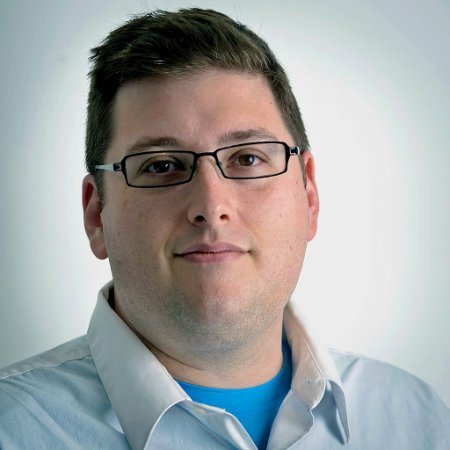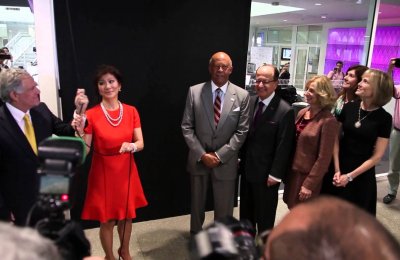
His is an unconventional tale of perseverance, which began with rejection.
“USC accepted me, but Annenberg rejected my transfer application,” Federman said. “I took the offer to be undeclared [at USC Dana and David Dornsife College of Letters, Arts and Sciences] and just basically badgered admissions until they accepted me.”
At 31, Federman jokes he is the “oldest undergrad in the program.” Before his stay at USC, he had a full-time position in the retail industry, working for the likes of Hollywood Video, Game Stop, and Barnes & Noble, while freelancing for video game publications. While selling Nooks, Federman realized retail wasn’t for him.
“I didn’t want to be stuck in that career,” Federman said. “I saw 30 on the horizon and I quit my full time job as a manager and went back to school.”
After working his way through two years of at Montgomery College earning his Associate’s degree in General Studies and finishing with honors, Federman set his eyes on a journalism degree from USC Annenberg.
USC Annenberg was his favored choice because it was the only school to offer a golf cart for the tour during a time when he hobbled in crutches, Federman said with a smile. But in all seriousness, he said the school impressed him with its diversity and innovation.
“I really liked the campus,” Federman said. “I went to a bunch of campuses and I thought I was going to be the odd man out because of my age, but there’s such a diversity not just from within the United States, but outside, that I knew that wouldn’t be an issue.”
The student-run digital news outlet, Neon Tommy, was also a revolutionary idea for Federman.
“You still had newspapers that had websites, but this student media production said, ‘No, forget newspapers. Those are antiquated,’” Federman said.
Though his initial rejection from the school would have disheartened most, it only increased Federman’s resolve.
“I don’t accept defeat in a lot of cases,” he said. “If someone says ‘No’ to one thing, there’s always another way to get to where you need to go.”
In this case, it took a willingness to dig in and do the work. He took the school’s offer to enroll with an undeclared major and applied his hardworking ethic to finishing his degree at the community college. To finish within two years (as opposed to two-and-a-half or three years), he took on more than the usual 14 unit course load each semester. Federman also had the foresight to get copies of transcripts from other USC transfer students who came from the same community college he attended.
“All the courses I took were targeted to be transferable to USC,” he said.
As soon as he gained admission to USC Annenberg, he also started working his way into Neon Tommy. “I went to the office and said, ‘Alright, I’m going to start writing stuff,’” Federman said. “I just hit the ground running.”
After writing a few articles, professors Alan Mittelstaedt and Marc Cooper who help lead Neon Tommy, offered a Federal Work-Study position with the publication.
From the beginning, Federman was drawn to Neon Tommy.
“It had an alternate vibe. Its own voice,” he said. “The type of content they were putting out was beyond your typical student newspaper. They were going out and doing engaging stories on what the greater community was doing.”
One of the earliest pieces Federman had penned for Neon Tommy didn’t even involve Los Angeles, it discussed gender inequality and rape culture in the games industry.
“That’s the kind of flexibility you wouldn’t normally have with a student media outlet,” Federman said.
As editor-in-chief this academic year, Federman continued to push the boundaries of the student publication. One investigative report written by Nathaniel Haas investigated sex on campus as an economic activity. A series of articles also looked at the issue of transportation in Los Angeles tackling Beverly Hills’ opposition to the Purple Line extension. The transportation pieces included: a prize-winning piece by Francesca Bessey on how bicycles can be an instrument of change; a piece by Cassie Patton on L.A.’s growing bicycle communities; and a profile of Bike Oven, a bike collective aimed at teaching bicycle care and maintenance to the Northeast Los Angeles community, by Matthew Tinoco.
Federman’s leadership also touched on the processes in the newsroom. Instead of complicated spreadsheets on several Google documents, the newsroom migrated to using Trello. He noted proudly: “Now we've got the whole Media Center hooked.”
Federman’s team had the distinction of being the first class to use USC Annenberg’s gleaming new 20,000-square-foot Media Center, which sits at the heart of Wallis Annenberg Hall. It’s a far cry from the 100-square-foot newsroom Neon Tommy used to call home. The office only had a conference with perhaps a dozen available chairs.
According to Federman, the Julie Chen/Leslie Moonves and CBS Media Center is a step in the right direction — encouraging convergence of media, cooperation and transparency. The move to the new space made collaborative coverage of news more instinctive among Neon Tommy, Annenberg TV News, and Annenberg Radio News.
When the Ferguson protests broke out in Los Angeles, the different outlets were able to pair up and send reporters together. In fact, stories resulting from the collaborative coverage were nominated as finalists for the Los Angeles Press Club's 57th SoCal Journalism Awards.
“Collaboration kicked in naturally,” Federman said. “You look over the desk and ask, ‘Are you sending someone over? Great! Let’s pair up!’”
In the Media Center, the historically siloed newsrooms cracked open.“There’s still no shared unified workflow for student media operations,” Federman said. Nonetheless, the willingness the student journalists have shown bodes well for USC Annneberg’s future plans.
Federman said his time at USC Annenberg has helped him overcome the self-doubt so persistent in journalists, but also helped him envision a viable career in journalism.
After graduating and moving cross-country to New York City, Federman began his new job this week as Audience Engagement Editor for Fortune, the business magazine published by Time Inc.
“Aging” though Federman maybe, he’s found his voice and his direction.









